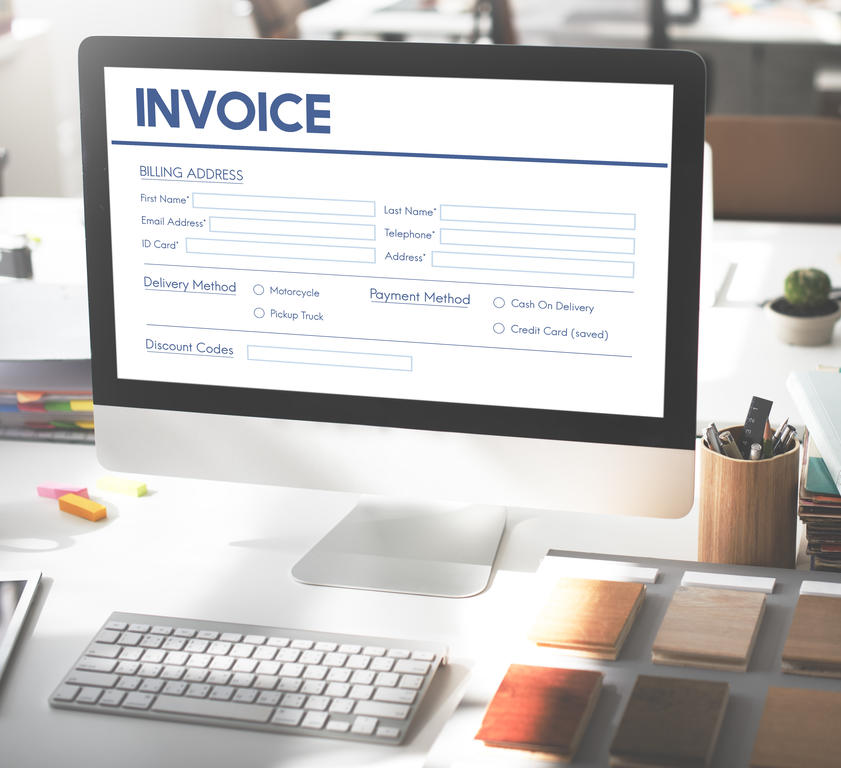
In the dynamic landscape of Indian business, staying ahead of regulatory changes and technological advancements is crucial for success. One of the most significant shifts in recent years has been the introduction of eInvoicing – a game-changing initiative that’s reshaping how businesses handle their financial transactions and tax compliance. As companies grapple with this digital transformation, NetSuite has emerged as a powerful ally, offering a comprehensive ERP solution that’s revolutionizing eInvoicing processes for Indian businesses.
The eInvoicing Revolution in India
Understanding the Basics
eInvoicing in India goes far beyond simply emailing PDF invoices. It’s a sophisticated system designed to standardize invoice creation across the country. At its core, eInvoicing involves generating invoices in a government-mandated format and reporting them to the Invoice Registration Portal (IRP) in real-time. This initiative aims to combat tax evasion, streamline GST filing, and provide businesses with a unified platform for managing their invoicing needs.
The Scope and Impact
Since its introduction, eInvoicing has become mandatory for an increasing number of businesses. Initially targeting companies with high annual turnover, the government has been gradually lowering the threshold, bringing more businesses under the eInvoicing umbrella. This expansion underscores the importance of having a robust eInvoicing solution in place, regardless of your company’s current size.
Benefits Beyond Compliance
While compliance is a primary driver for adopting eInvoicing, the benefits extend far beyond merely meeting regulatory requirements. Businesses implementing effective eInvoicing systems often report:
- Improved cash flow management
- Reduced errors and disputes
- Enhanced data accuracy for better business insights
- Streamlined reconciliation processes
- Increased transparency in business transactions
These advantages make eInvoicing not just a compliance necessity but a strategic tool for business growth and efficiency.
Navigating the Challenges of eInvoicing Compliance
The transition to eInvoicing, while beneficial, comes with its own set of challenges. Many businesses find themselves facing hurdles such as:
- Technological Adaptation
Existing systems often need significant upgrades or complete overhauls to meet the new requirements. This can be particularly challenging for businesses with legacy systems or those that have relied heavily on manual processes. - Real-time Compliance
The need for real-time invoice registration and validation puts pressure on businesses to have systems that can operate quickly and accurately. Any delay or error in this process can lead to compliance issues and potential penalties. - Data Management
eInvoicing generates a substantial amount of data that needs to be stored securely and managed efficiently. This increase in data flow can strain existing storage systems and require new data management strategies. - Integration Complexities
For many businesses, the challenge lies in integrating eInvoicing processes with their existing ERP, accounting, and customer relationship management (CRM) systems. Seamless integration is crucial for maintaining operational efficiency. - Staff Training and Adaptation
Implementing new systems and processes requires comprehensive training for staff. Resistance to change and the learning curve associated with new technologies can slow down adoption and efficiency. - Keeping Pace with Regulatory Changes
The eInvoicing landscape in India is still evolving, with frequent updates to rules and requirements. Staying abreast of these changes and quickly adapting systems accordingly is a constant challenge. - Cost Implications
Implementing a new eInvoicing system or upgrading existing ones can be costly, especially for small and medium-sized enterprises (SMEs). Balancing the need for compliance with budget constraints is a significant consideration for many businesses.
NetSuite: Revolutionizing eInvoicing for Indian Businesses
Amidst these challenges, NetSuite stands out as a comprehensive solution that addresses the multifaceted needs of eInvoicing in India. As a cloud-based ERP system, NetSuite offers a range of features specifically tailored to meet the eInvoicing requirements of Indian businesses while providing the flexibility and scalability needed in today’s dynamic business environment.
Key Features of NetSuite for eInvoicing in India
- Automated eInvoice Generation
NetSuite automates the creation of eInvoices in the government-mandated JSON format. This automation ensures that every invoice generated is compliant with the latest regulations, significantly reducing the risk of errors that can occur with manual data entry. - Real-time IRP Integration
One of NetSuite’s standout features is its seamless integration with the Invoice Registration Portal. This integration allows for real-time invoice registration and QR code generation, ensuring that your invoices are always compliant and ready for use. - Comprehensive GST Compliance
NetSuite’s India-specific features go beyond just eInvoicing. The system ensures that all aspects of GST compliance are covered, from correct tax calculations to proper reporting formats. This comprehensive approach simplifies the entire GST compliance process for businesses. - Customizable Workflows
Recognizing that each business has unique needs, NetSuite offers flexible workflow options. You can tailor your eInvoicing process to match your specific business requirements, ensuring that the system works for you, not the other way around. - Advanced Reporting Capabilities
Generate detailed reports on your eInvoicing activities with ease. NetSuite’s reporting features provide valuable insights into your compliance status, invoice trends, and other critical metrics, helping you make informed business decisions. - Multi-GSTIN Support
For businesses operating across multiple states, NetSuite offers robust support for multiple GSTIN numbers. This feature streamlines operations for companies with a pan-India presence, ensuring compliance across all locations. - Automated Validations
Built-in checks and balances ensure that your invoices meet all necessary criteria before submission. These automated validations significantly reduce the chance of rejection, saving time and preventing compliance issues. - Seamless ERP Integration
As a complete ERP solution, NetSuite integrates eInvoicing with other critical business processes. From order management to financial reporting, everything works in harmony, providing a unified view of your business operations. - Cloud-Based Accessibility
Being cloud-based, NetSuite offers the flexibility to access your eInvoicing system from anywhere, at any time. This feature is particularly valuable in today’s increasingly remote and mobile work environments. - Regular Updates and Compliance Assurance
NetSuite’s team stays on top of regulatory changes, providing regular updates to ensure your system remains compliant with the latest eInvoicing requirements in India.
Implementing NetSuite for eInvoicing: A Comprehensive Guide
Successfully implementing NetSuite for eInvoicing requires a structured approach. Here’s an expanded step-by-step guide to help you navigate the process:
Step 1: Assessment and Planning
Begin with a thorough assessment of your current invoicing processes. Identify pain points, inefficiencies, and areas that need improvement. Work closely with a NetSuite implementation partner to create a customized plan that aligns with your business needs and compliance requirements. This phase should include:
– Mapping out your current invoicing workflow
– Identifying key stakeholders and their roles in the new system
– Setting clear objectives for the implementation
– Developing a timeline for the rollout
Step 2: System Configuration
Configure NetSuite to match your business structure and invoicing requirements. This step involves:
– Setting up multiple GSTINs if required
– Customizing fields and forms to match your business needs
– Configuring workflows to automate your invoicing process
– Setting up user roles and permissions
– Customizing invoice templates to include all required fields for eInvoicing
Step 3: Data Migration
If you’re transitioning from another system, carefully plan and execute the migration of your existing invoice data to NetSuite. This critical step ensures continuity and maintains historical records. The process typically involves:
– Identifying which data needs to be migrated
– Cleaning and standardizing data before migration
– Testing the migration process with a subset of data
– Verifying the accuracy of migrated data
– Developing a strategy for handling any data that can’t be migrated automatically
Step 4: Integration with IRP
Set up the integration between NetSuite and the Invoice Registration Portal. This involves:
– Configuring API credentials for secure communication
– Setting up the connection between NetSuite and the IRP
– Testing the integration to ensure smooth data flow
– Implementing error handling and notification systems
Step 5: Testing and Validation
Conduct thorough testing of the eInvoicing process within NetSuite. This should cover:
– Generating invoices in various scenarios
– Submitting invoices to the IRP and receiving acknowledgments
– Handling different types of invoices (B2B, B2C, export, etc.)
– Testing the cancellation and amendment processes
– Verifying the accuracy of QR codes and IRNs
– Stress testing the system to ensure it can handle your invoice volume
Step 6: Training and Rollout
Proper training is crucial for the successful adoption of the new system. Develop a comprehensive training program that covers:
– Basic NetSuite navigation and functionality
– Specific eInvoicing processes within NetSuite
– Compliance requirements and their importance
– Handling common scenarios and troubleshooting
Implement the system in phases, starting with a pilot group before rolling out to the entire organization. This approach allows you to identify and address any issues on a smaller scale before full implementation.
Step 7: Monitoring and Optimization
After go-live, closely monitor the system’s performance and gather feedback from users. This ongoing process should include:
– Tracking key performance indicators related to eInvoicing
– Regularly reviewing system logs for any errors or issues
– Gathering user feedback and addressing concerns promptly
– Staying informed about regulatory changes and updating the system accordingly
– Continuously optimizing workflows based on usage patterns and feedback
Get in Touch
We know what NetSuite can do and how it can help you. Schedule your free NetSuite assessment today
Best Practices for Maximizing NetSuite’s eInvoicing Capabilities
To truly harness the power of NetSuite for eInvoicing in India, consider these expanded best practices:
- Stay Updated with NetSuite Releases
Regularly update your NetSuite instance to ensure you have the latest features and compliance updates. Set up a process to review release notes and plan for any necessary system changes. - Leverage Automation to the Fullest
Take advantage of NetSuite’s automation features beyond just invoice generation. Automate related processes like purchase orders, expense reports, and payment reminders to create a fully integrated financial ecosystem. - Implement Robust Data Governance
Establish clear data governance policies to ensure the accuracy and security of your eInvoicing data. This includes regular data audits, access controls, and data backup procedures. - Utilize NetSuite’s Customization Features Wisely
While NetSuite offers extensive customization options, be strategic in your customizations. Focus on changes that add significant value without complicating future updates or compliance changes. - Establish a Continuous Training Program
Develop an ongoing training program to keep your team updated on both NetSuite features and eInvoicing regulations. This could include regular workshops, e-learning modules, and hands-on practice sessions. - Implement a Robust Testing Strategy
Develop a comprehensive testing strategy that includes regular system checks, especially after updates or customizations. This helps ensure continued compliance and system efficiency. - Leverage NetSuite’s Reporting for Insights
Utilize NetSuite’s advanced reporting features to gain insights into your invoicing processes. Regularly review metrics like invoice processing times, error rates, and compliance status to identify areas for improvement. - Integrate with Other Business Processes
Maximize the value of your NetSuite implementation by integrating eInvoicing with other business processes like inventory management, CRM, and supply chain management for a holistic view of your operations. - Establish Clear Communication Channels
Set up clear channels for communicating eInvoicing-related updates, issues, and best practices within your organization. This could include regular team meetings, an internal knowledge base, or a dedicated Slack channel. - Plan for Scalability
As your business grows, ensure your NetSuite setup can scale accordingly. Regularly review your system’s capacity and plan for upgrades or additional modules as needed.
The Evolution of eInvoicing in India: What’s Next?
As we look to the future, it’s clear that eInvoicing in India is set to evolve further. Here are some trends and predictions to keep in mind:
Expanding Scope
The government is likely to continue lowering the turnover threshold for mandatory eInvoicing compliance, bringing more businesses into the fold. Preparing for this expansion now, even if you’re not currently required to comply, can give you a significant advantage.
Integration with Other Digital Initiatives
Expect to see further integration of eInvoicing with other digital initiatives like e-way bills, e-receipts, and potentially a comprehensive digital tax administration system. This integration will create a more interconnected digital ecosystem for businesses.
Advanced Analytics and AI
The vast amount of data generated through eInvoicing is likely to pave the way for advanced analytics and AI-driven insights. These technologies could help businesses optimize their financial processes and make more informed decisions.
Enhanced Security Measures
As eInvoicing becomes more prevalent, we can expect to see enhanced security measures to protect sensitive financial data. This might include advanced encryption methods and more robust authentication processes.
International Standardization
With many countries adopting eInvoicing, there’s a possibility of moving towards international standardization. This could simplify processes for businesses operating across borders.
Conclusion: Embracing the Future with NetSuite
eInvoicing in India represents more than just a compliance requirement; it’s a gateway to digital transformation in finance and taxation. By implementing NetSuite for your eInvoicing needs, you’re not just meeting regulatory demands – you’re positioning your business for future success in an increasingly digital business landscape.
NetSuite’s robust features, coupled with its flexibility and scalability, make it an ideal choice for businesses of all sizes looking to streamline their eInvoicing processes. From automated invoice generation to seamless IRP integration and comprehensive reporting, NetSuite offers a complete solution that grows with your business.
As you embark on your eInvoicing journey with NetSuite, remember that this is more than just a technological upgrade – it’s a strategic move that can enhance your business operations, improve cash flow management, and provide valuable insights into your financial processes.
The digital transformation of invoicing in India is an opportunity to revisit and optimize your entire financial workflow. With NetSuite as your partner, you’re well-equipped to turn the challenges of eInvoicing into opportunities for growth and efficiency.
Embrace the change, leverage the power of NetSuite, and lead your business into a new era of digital financial management. The future of invoicing is here, and with NetSuite, you’re ready to make the most of it.
By adopting NetSuite for your eInvoicing needs, you’re not just complying with regulations – you’re future-proofing your business. In the rapidly evolving landscape of Indian business and taxation, having a flexible, powerful tool like NetSuite at your disposal can make all the difference. It’s time to streamline your eInvoicing process, enhance your financial visibility, and propel your business forward in the digital age. With NetSuite, you’re not just keeping up – you’re staying ahead.
FAQs:
eInvoicing in India refers to the process of electronically validating and reporting invoices to the government’s Invoice Registration Portal (IRP) in real time. It standardizes invoice creation and ensures compliance with GST regulations, aimed at reducing tax evasion and improving transparency in business transactions.
No, eInvoicing is not mandatory for all businesses. Initially, it applied to companies with an annual turnover of ₹500 crores or more, but the threshold has been gradually lowered. As of now, businesses with turnover above ₹10 crores are required to comply, and further reductions may be expected.
NetSuite streamlines the eInvoicing process by automating the generation of compliant invoices, integrating with the IRP for real-time reporting, and ensuring GST compliance. Its features reduce errors, improve cash flow management, enhance data accuracy, and provide valuable insights through advanced reporting.
NetSuite automates the entire GST process, from tax calculation to filing. It ensures invoices are compliant with the latest GST regulations and automatically generates the required formats, including JSON for eInvoicing. This simplifies the filing and reporting process for businesses.
Yes, NetSuite supports multiple GSTINs for businesses operating across different states in India. This allows companies with a pan-India presence to manage their eInvoicing requirements efficiently, ensuring compliance for all locations.
The main challenges include adapting to new technology, ensuring real-time compliance, managing large amounts of data, integrating with existing systems, and training staff. Additionally, keeping up with evolving regulatory changes and managing the cost of system upgrades can be hurdles.
NetSuite integrates seamlessly with the government’s Invoice Registration Portal (IRP), allowing businesses to register invoices and generate QR codes in real-time. This ensures that invoices are validated and compliant before they are issued to customers.
While implementing NetSuite requires an initial investment for setup and customization, it can significantly reduce long-term costs by improving efficiency, reducing errors, and automating compliance. For small and medium-sized enterprises (SMEs), the cost must be weighed against the benefits of streamlined operations and regulatory compliance.
NetSuite provides features for handling invoice cancellations and amendments in compliance with the government’s eInvoicing rules. These processes are automated to ensure compliance, and businesses can easily manage cancellations or changes through the system.
In the future, eInvoicing is expected to become mandatory for more businesses as the turnover threshold continues to drop. Additionally, further integration with other digital tax systems, the use of AI-driven analytics, and enhanced security measures are anticipated to shape the future of eInvoicing in India.








